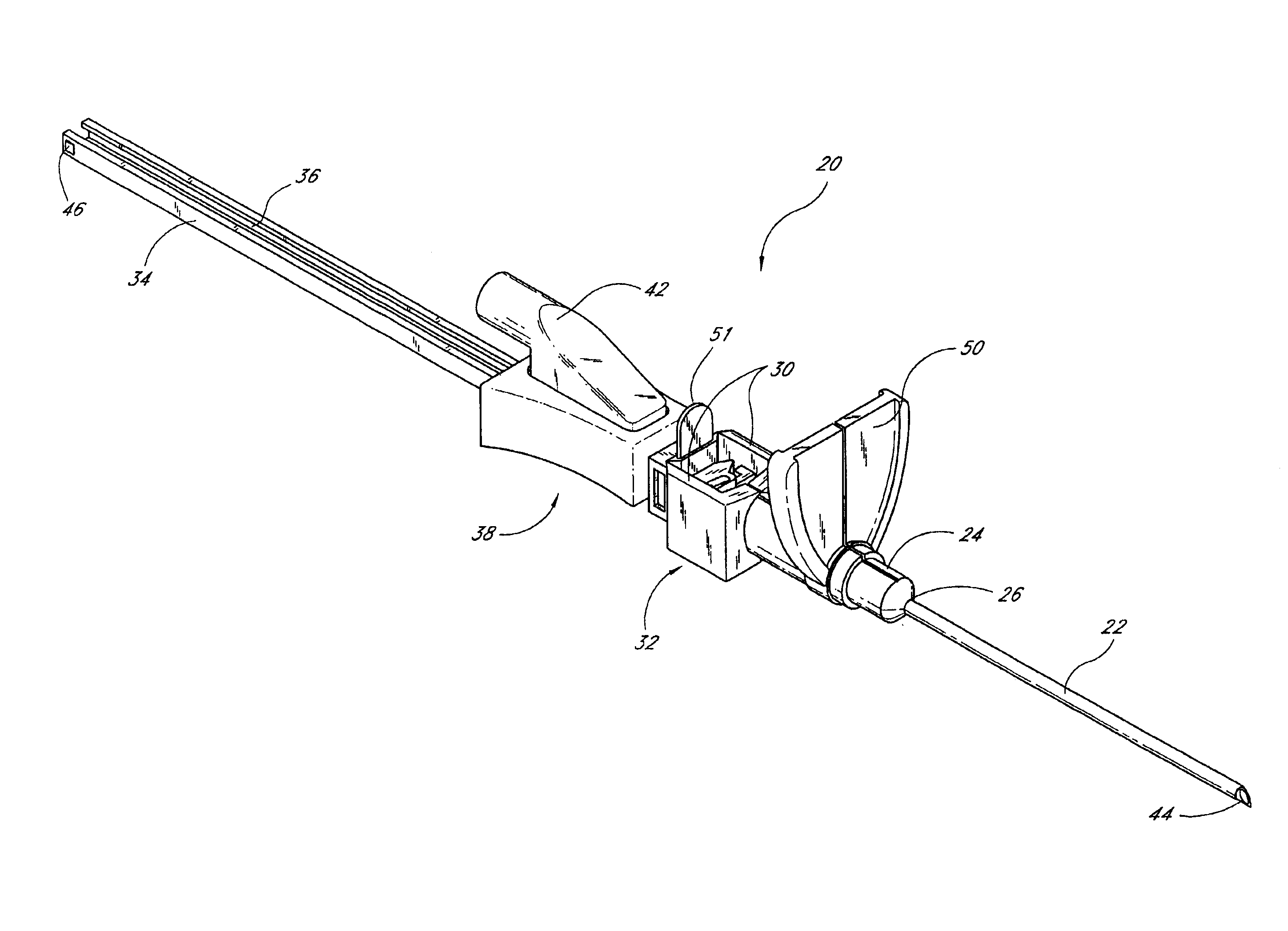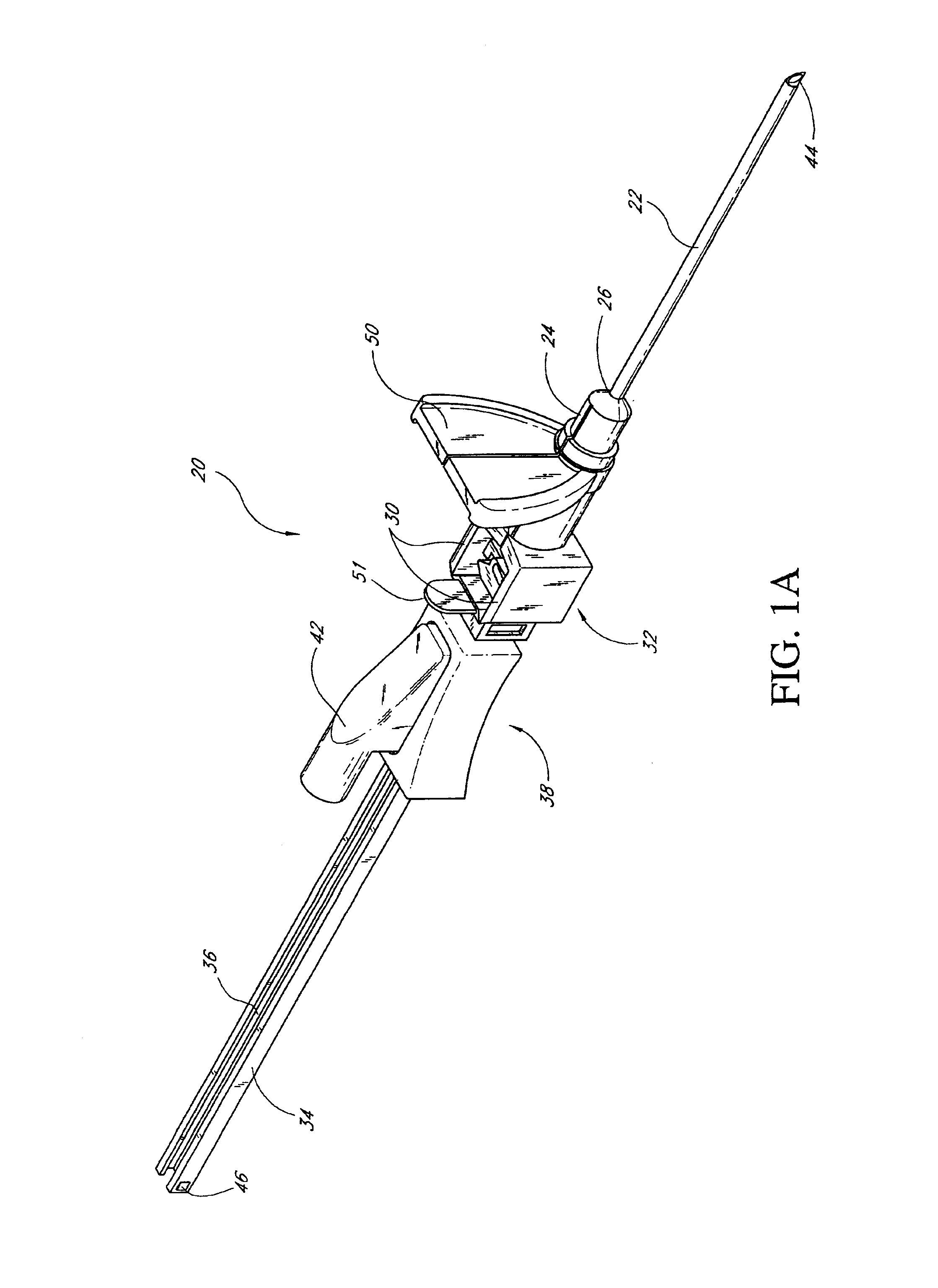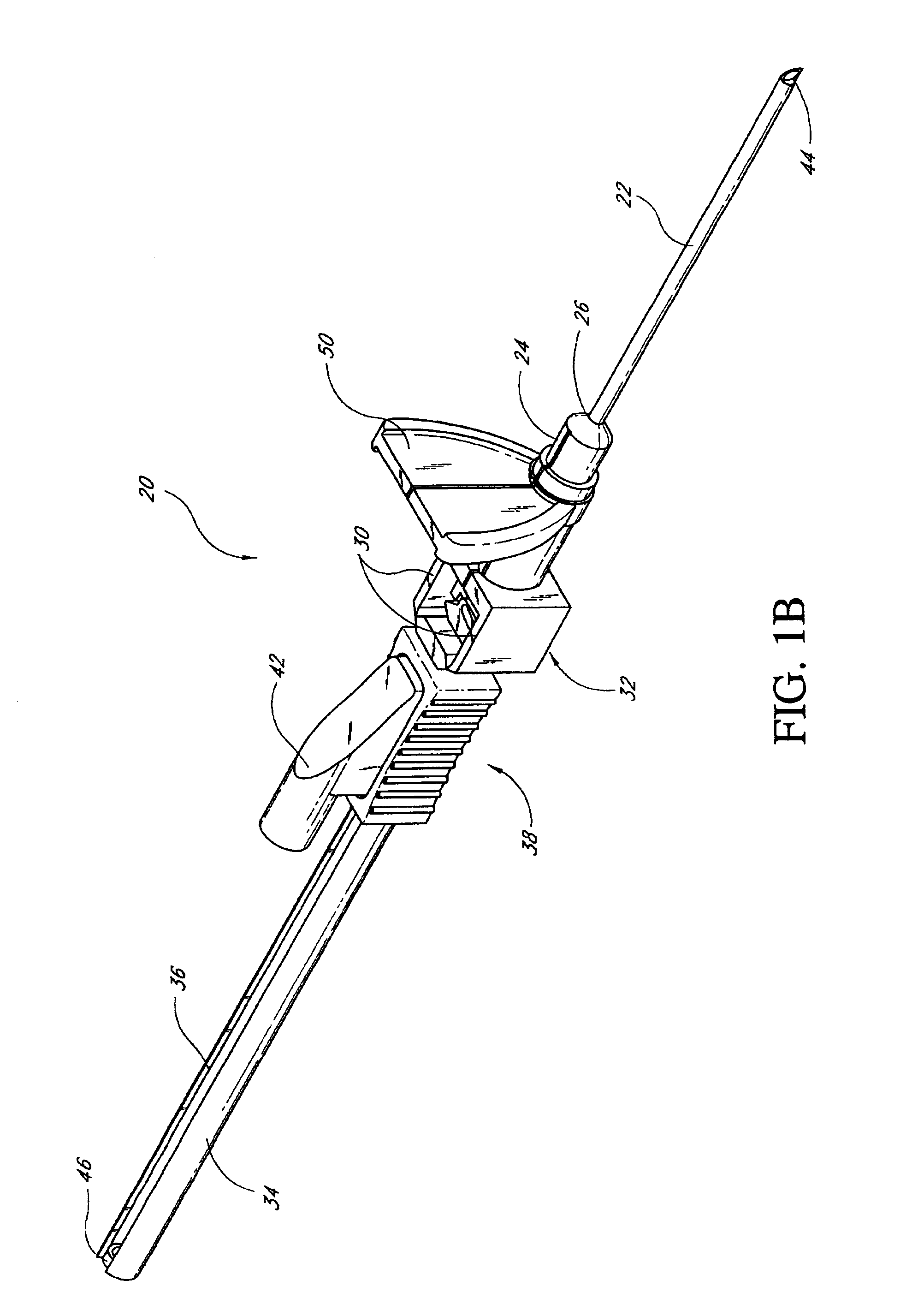Universal passive protector for an IV catheter
a passive protector and iv catheter technology, applied in the field of medical devices, can solve the problems of undetected exposure of both the patient and the attendant medical personnel to accidental contact with the cannula, disadvantageous metal needles, and prone to leaving the sharp distal tip of the needle exposed,
- Summary
- Abstract
- Description
- Claims
- Application Information
AI Technical Summary
Benefits of technology
Problems solved by technology
Method used
Image
Examples
Embodiment Construction
,” one will understand how the features of the preferred embodiments provide advantages, which include compatibility with any catheter hub, protection against needle sticks without the need to exercise extreme caution, and ease of operation for consistent proper catheter emplacement.
[0024]A preferred embodiment of the universal passive protector for an IV catheter comprises an over-the-needle catheter including a hub. The hub is retained within a hub trap comprising first and second arms. A slider connected to a proximal end of the needle is movable along a sheath from a distal position to a proximal position. When the slider is in the distal position, the needle extends through a locking structure of the hub trap, thereby retaining the first and second arms in a closed position wherein the hub is trapped between the first and second arms. When the slider is in the distal position, a distal tip of the needle is proximal of the locking structure and the first and second arms are in a...
PUM
 Login to View More
Login to View More Abstract
Description
Claims
Application Information
 Login to View More
Login to View More - R&D
- Intellectual Property
- Life Sciences
- Materials
- Tech Scout
- Unparalleled Data Quality
- Higher Quality Content
- 60% Fewer Hallucinations
Browse by: Latest US Patents, China's latest patents, Technical Efficacy Thesaurus, Application Domain, Technology Topic, Popular Technical Reports.
© 2025 PatSnap. All rights reserved.Legal|Privacy policy|Modern Slavery Act Transparency Statement|Sitemap|About US| Contact US: help@patsnap.com



